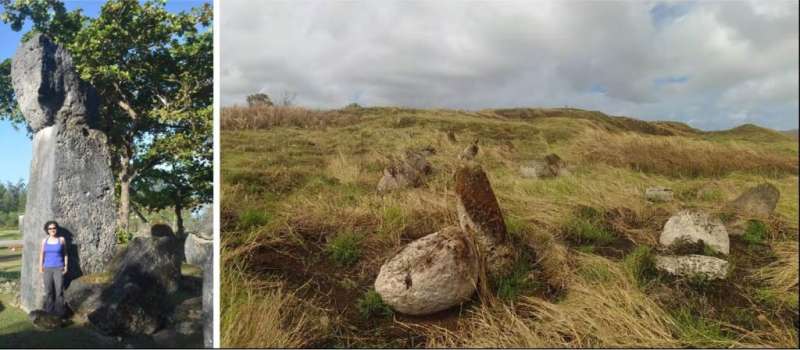Dr Andrea Jalandoni provides scale at House of Taga Latte near Fena Lake. Credit: Griffith University
Griffith University researchers are using the same technology that helps control automated vehicles and is used in speed cameras to find ancient sites in the Mariana Islands.
Published in the Journal of Computer Application in Archaeology, the paper explores the use of lidar on the western Pacific island of Guåhan (Guam) to map sites which previously may not have been discovered.
Lidar (Light detection and ranging) is a non-invasive remote sensing technique that works by sending out laser pulses and calculating the return time from surface reflections.
Dr. Andrea Jalandoni, a digital archaeologist from Griffith University's Center for Social and Cultural Research, said the research was being used to showcase what known archaeological sites look like on lidar so that more archaeological sites can be found.
"Several of the sites are from the Latte, Spanish and Modern periods and we see that lidar is a very effective way to see and map the sites that are obscured and may not be visible due to vegetation," Dr. Jalandoni said.
Victor H. Torres, an Indigenous archaeologist and mapping specialist, said the work is an interesting look at how a modern technology like lidar can contribute to the discovery and understanding of the past.
"In our project, we showed one application of lidar data for Guåhan but there are many other uses, like sea level rise modeling or construction monitoring," said Maria Kottermair, a mapping specialist.
"We have only scratched the surface and there is a lot more that can be done with this technology."
More information: Andrea Jalandoni et al, Effectiveness of 2020 Airborne Lidar for Identifying Archaeological Sites and Features on Guåhan (Guam), Journal of Computer Applications in Archaeology (2022). DOI: 10.5334/jcaa.101
Provided by Griffith University
























